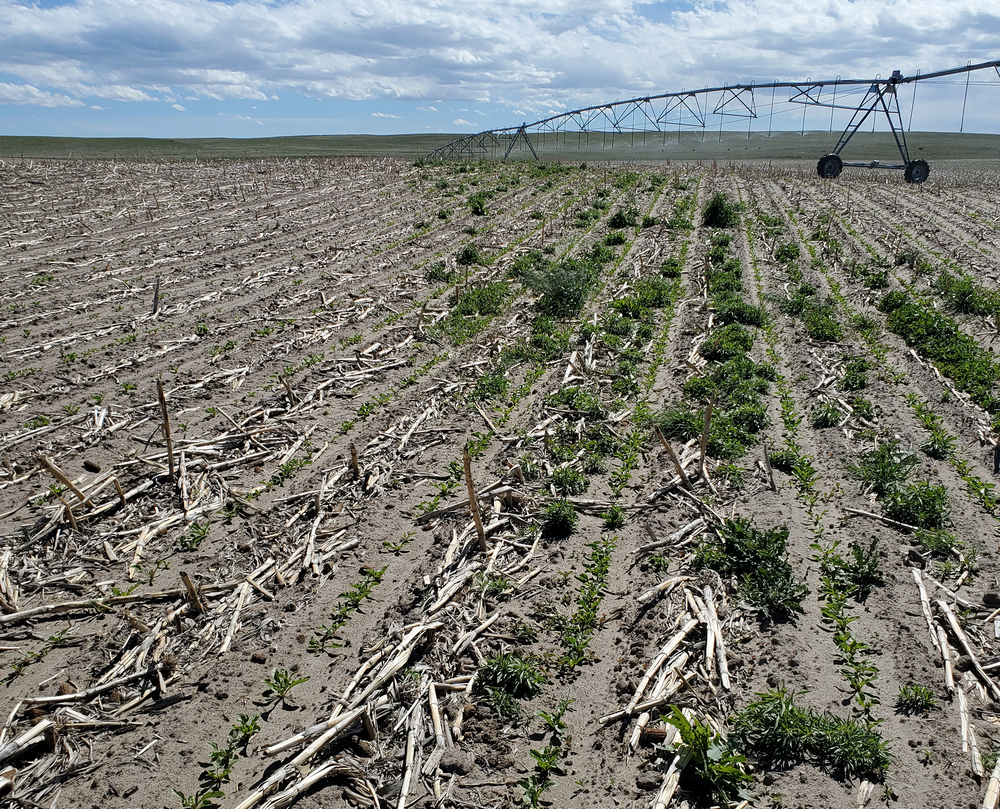![]()

By Chabella Guzman, PREEC Communications / Dr. Nevin Lawrence, Nebraska Extension Weed Management Specialist
In 2019, Western Sugar Cooperative knew it had a problem when the herbicide-resistant weed Palmer amaranth became more common within its 135,000-acre sugar beet crop.
“Palmer amaranth can seed and begin to grow in under two weeks and grow two inches a day,” said Rebecca Larsen, Western Sugar’s chief scientist. “It’s competitive and can crowd out the sugar beet plant before it can get established.”
Palmer Amaranth is a veritable weed powerhouse producing thousands of seeds per plant. It grows in cropland where the ground is often disturbed, can emerge throughout the entire growing season, is more competitive than other pigweed species, and is resistant to several herbicide modes-of-action across the US. While Palmer amaranth was spreading across the Nebraska and Colorado sugar beet acres, Dr. Nevin Lawrence, Nebraska Extension Weed Management Specialist located at the Panhandle Research, Extension, and Education Center in Scottsbluff, had been working on the management of Palmer for several years. Fortunately Lawrence had begun research into a novel herbicide for Palmer control in sugar beet in 2018 when ADAMA, a crop protection company, sent Lawrence and other weed scientists samples of their herbicide Goltix.
“At the time, I was the only sugar beet weed scientist in the United States who was actively doing a lot of research in the management of Palmer amaranth, and the herbicide was really, really good when applied pre-crop emergence for management of Palmer in sugar beets,” Lawrence said.
Lawrence saw the product as a clear breakthrough for sugar beet growers. He approached Western Sugar Cooperative, and the two collaborated with funding and research to begin the process of bringing Goltix to sugar beet growers. “There was a lot of work needed to figure out an optimal rate that was high enough to control Palmer but also economical for the growers. We also had to figure out how to integrate Goltix with current sugar beet production practices like irrigation, tillage, and the use of other herbicides”, said Lawrence. After six years of field trials, the only thing needed was an herbicide label to allow commercial use in the U.S.
While it has been used for decades in Europe Goltix, and its active ingredient, had never been registered in the U.S. The normal process for creating a pesticide label is time consuming and expensive, however in emergency situations, where farmers are facing significant economic loss and there is no other available pesticide to manage a pest, an emergency use label can by granted by the EPA.
Western Sugar was beginning to look at substantial yield loss without the herbicide. “This is really the only herbicide that was an option,” Lawrence said. “So, they decided to go for what’s called a Section 18 or an emergency use label. This was the first time. As far as I’m aware, they’ve granted an emergency use label for an herbicide that had never been labeled in the U.S.”
A section 18 Label for Goltix was granted for sugar beet growers in Colorado and Nebraska for use in the spring of 2024. “This year was a rush as we received the use label just in time for use from March 31 to May 31 (when sugar beets are planted),” Larsen said.
“I probably had over 40 or 45 phone calls from agronomists and growers asking how to use the product in April and May,” Lawrence said. “So that was a really crazy spring for me, but it went out in 2024, and so far, the results from growers and Western Cooperative have been just outstanding.”
The Emergency Use Label will need to be renewed each year until the EPA releases a normal label.
